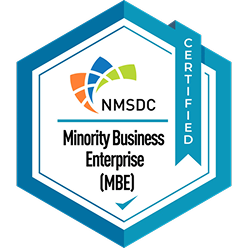
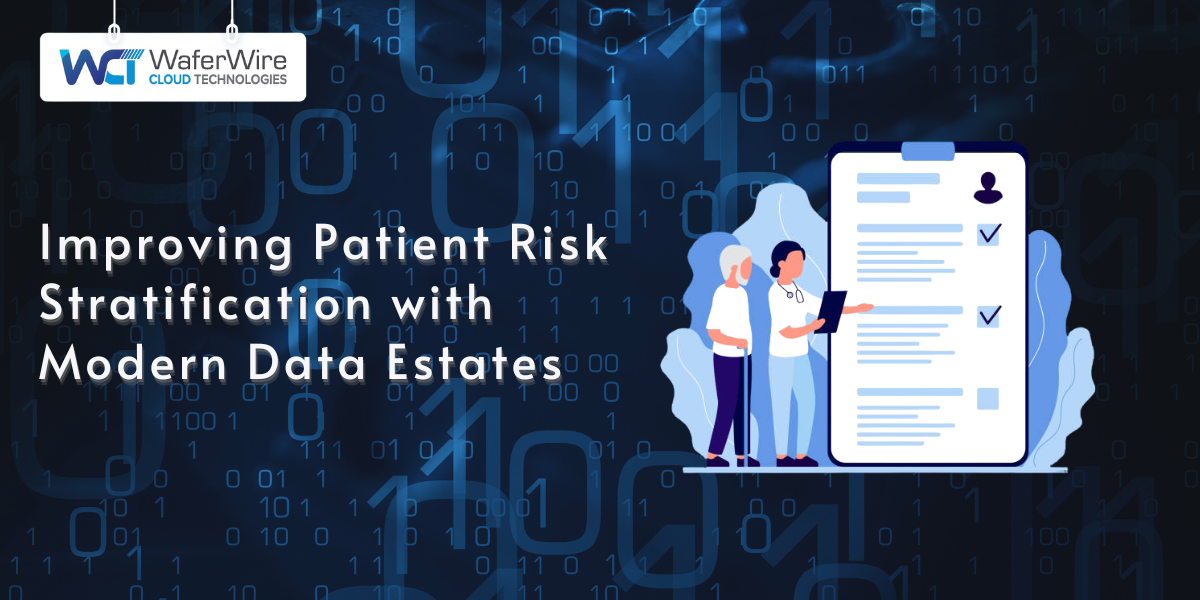
Every day, hospitals generate huge amounts of data, from patient records and lab results to medical images and operational logs. Much of this data is stored in separate systems, making patient risk stratification slower and less accurate.
Microsoft Fabric helps hospitals consolidate all their data in one place, making it easier to analyze and take action. By combining different data sources and using real-time analytics, hospitals can improve patient risk stratification, spot high-risk patients faster, manage resources efficiently, and deliver better care.
This blog explores how modernizing data estates can streamline patient risk stratification and enable hospitals to make more informed, timely decisions for improved patient outcomes.
Before exploring how modern data platforms can transform healthcare delivery, it’s important to understand the foundation of patient risk stratification and why it matters for hospitals.
Patient risk stratification is the process of grouping patients based on their chances of developing health problems. It uses clinical data, demographic details, and patient history to separate patients into different risk levels.
The goal is to help care teams focus on patients who need more attention, plan treatment better, and provide the right care at the right time.
Studies show that most of patients account for nearly 50% of total healthcare costs, highlighting the need for accurate risk assessment to support timely decisions and avoid preventable hospital visits.
Here are the key benefits of effective patient risk stratification:
Example: Consider a hospital treating patients with diabetes and heart disease. With a proper risk stratification system, high-risk individuals can be identified early, placed in focused programs, and monitored closely, leading to better outcomes and more efficient hospital operations.
Also Read: Understanding the Benefits and Examples of Data Modernization Strategy
Once the importance of patient risk stratification is clear, the next step is to examine its core elements. These elements form the basis of effective risk assessments and guide care teams in making informed decisions.
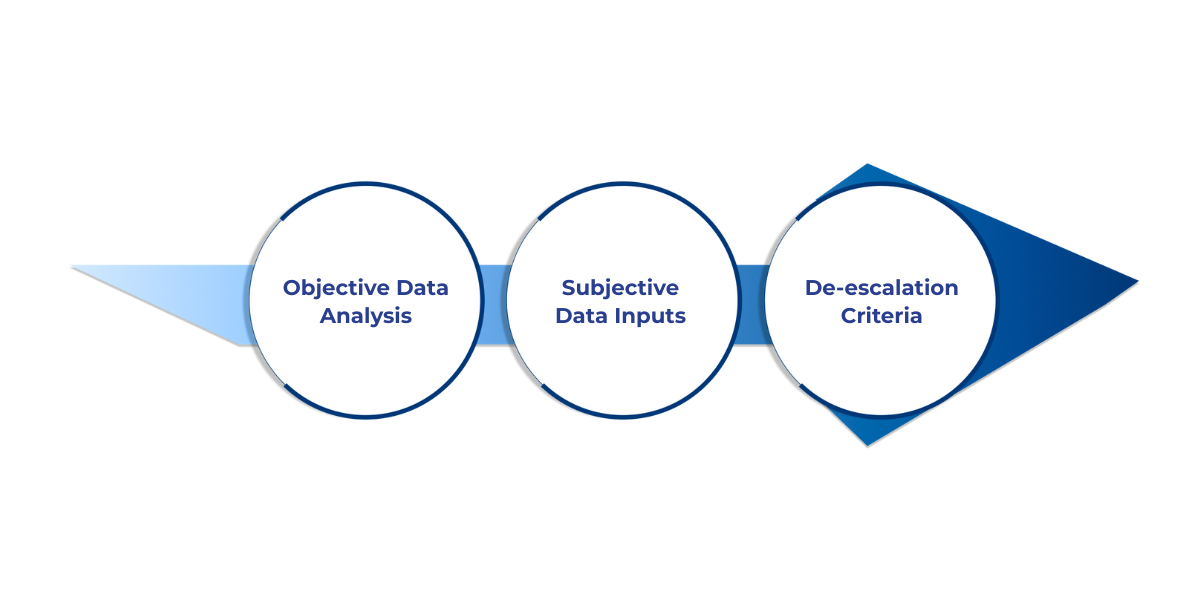
Risk stratification helps hospitals group patients based on their health needs, allowing teams to plan treatments, manage resources, and improve outcomes. By combining clinical data with patient inputs, hospitals can make better decisions for care delivery.
These elements include:
With these elements in place, hospitals can apply structured methods and modern tools to put risk stratification into action. The following approaches show how integrated platforms like Microsoft Fabric and Power BI can enhance precision and efficiency.
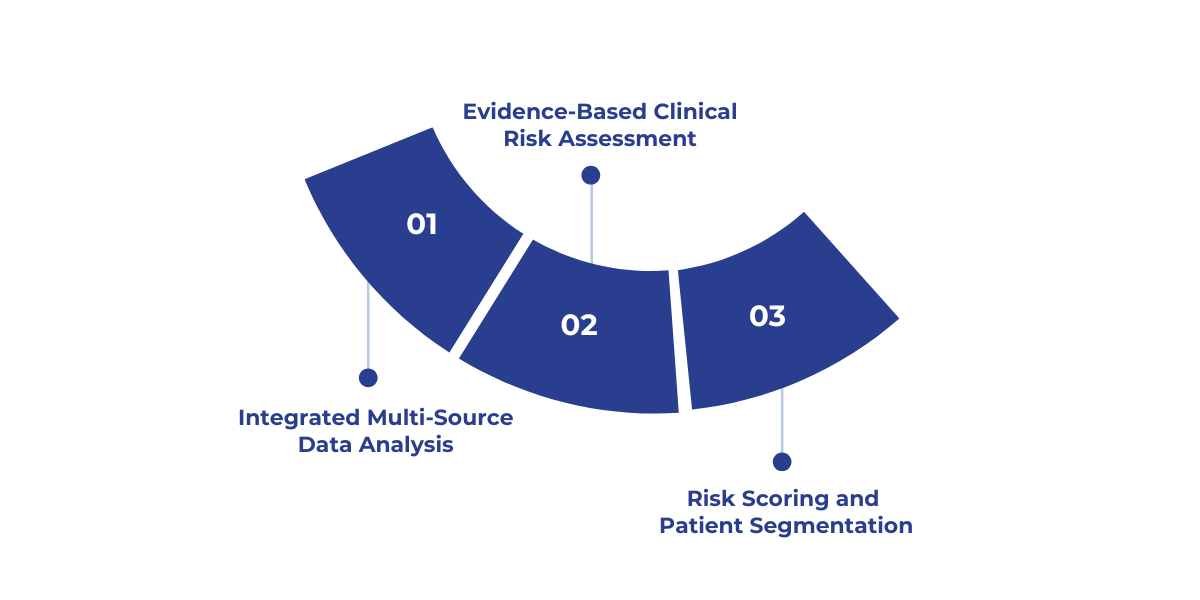
Hospitals can improve patient outcomes by using modern data platforms for risk stratification. Tools like Microsoft Fabric, its Lakehouse, and Power BI can help connect data and provide clear insights for better patient care.
The following approaches help identify high-risk patients and guide timely interventions:
Combine data from EHRs, lab results, imaging, wearable devices, and social determinants of health in a centralized Lakehouse. Integrating these sources provides a 360° view of each patient, improving risk assessment accuracy.
Use validated clinical scoring systems, guidelines, and patient history to assess risk levels. Power BI dashboards make it easy to see risk levels and support data-driven decisions.
Combining structured clinical assessments with data from multiple sources ensures accurate identification of high-risk patients without relying solely on algorithms.
Assign risk scores based on clinical, behavioral, and social information. With Power BI, hospitals can group patients into high, medium, and low-risk categories, helping prioritize care and resources effectively.
Using Microsoft Fabric and Power BI this way helps hospitals turn scattered data into clear insights, allowing faster interventions and better care for patients.
Looking to enhance patient risk stratification in your hospital? WaferWire helps modernize data estates to unify patient data, improve risk assessment, and enable timely, informed care decisions.
To support these methods at scale, hospitals need a strong technological foundation. Data estate modernization plays a crucial role by enabling better data integration, predictive analytics, and real-time insights.
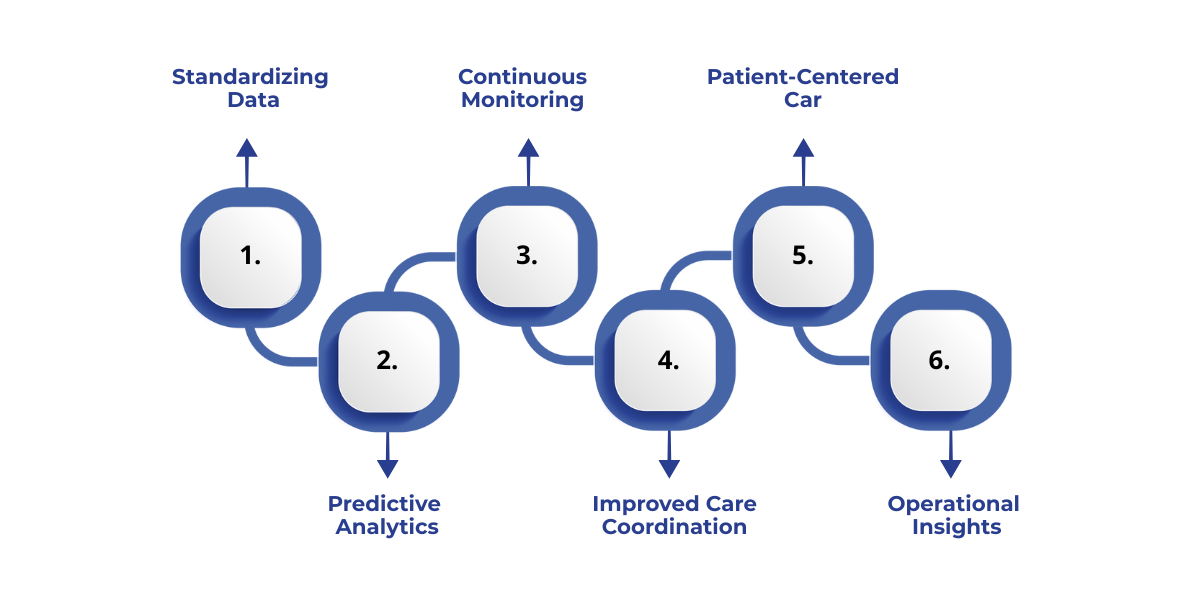
Modern data platforms help hospitals enhance patient risk stratification by combining clinical, operational, and social data. This approach allows hospitals to identify high-risk patients, prioritize interventions, and improve overall outcomes.
To begin, hospitals need to consolidate and standardize data across all sources.
Hospitals can bring together data from EHRs, lab systems, imaging, and wearable devices to create a unified patient profile.
For example, a centralized platform can provide a comprehensive view of a patient’s medical history, lab results, and social determinants. With this clarity, hospitals can implement targeted programs for early intervention and preventive care.
Challenges:
Best Practices:
Once data is consolidated, predictive analytics becomes more effective.
By analyzing integrated data, hospitals can forecast patient risks and flag those who need immediate attention.
Tools using AI and machine learning help generate accurate risk scores and personalized care plans, ensuring timely interventions for patients most likely to experience complications.
Challenges:
Best Practices:
After identifying high-risk patients, hospitals benefit from continuous monitoring and feedback.
Modern platforms allow real-time tracking of patient vitals and outcomes through IoT devices, telehealth systems, and remote monitoring, such as Data analytics and AI tools. Hospitals can collect feedback, adjust care strategies quickly, and evaluate the effectiveness of interventions.
Challenges:
Best Practices:
To strengthen these efforts, care coordination must be improved.
Integration of provider, payor, and community data supports smooth collaboration across teams.
For instance, modern workflows reduce duplication, streamline communications, and ensure that care plans are executed efficiently, enhancing patient outcomes and safety.
Challenges:
Best Practices:
With better coordination, hospitals can expand proactive and patient-centered care.
Telehealth, virtual visits, and AI-driven engagement tools help hospitals reach high-risk or underserved populations. Analytics dashboards allow tracking trends, monitoring outcomes, and taking preemptive action to reduce complications.
Challenges:
Best Practices:
Finally, hospitals gain operational insights and decision support to optimize resource use.
Hospitals can manage staffing, bed allocation, and patient flow more effectively. Data platforms provide actionable insights, enabling timely interventions and efficient use of hospital resources.
Challenges:
Best Practices:
Also Read: Guide to Data Security and Privacy in Microsoft Fabric
Beyond risk scoring and analytics, modernizing the data estate drives widespread improvements across hospital operations. It strengthens decision-making, accelerates policy implementation, and enhances overall hospital performance.
Hospitals often face challenges in managing resources, coordinating teams, and making timely, data-driven decisions. Scattered information and complex workflows can slow operations and affect patient care.
Modernizing the data estate connects all information in one place, providing clear insights to optimize processes, allocate resources efficiently, and improve overall outcomes.
Here’s how it drives results:
Bringing it all together, modernizing data systems is not just about technology. it’s about enabling hospitals to identify high-risk patients early, allocate resources wisely, and deliver timely, high-quality care.
At WaferWire, we help hospitals enhance patient risk stratification by modernizing data estates for accurate, timely, and actionable insights. Here’s how we can assist:
Additionally, our solution accelerators ensure a smooth transition to modern data-driven risk stratification:
This approach helps hospitals identify high-risk patients faster, make data-driven decisions, and improve overall care efficiency.
By updating data systems and using technologies like AI, predictive analytics, and cloud platforms, hospitals can improve patient risk stratification. This helps identify high-risk patients early, use resources better, and provide faster, more accurate care.
Modern systems not only solve today’s challenges but also prepare hospitals for the future, improving patient outcomes and making care more efficient.
At WaferWire, we help hospitals upgrade their data systems and use smart tools to make risk stratification easier and more effective.
Contact us today to see how we can help improve care, reduce risks, and make your hospital ready for the future.
1. What is patient risk stratification?
It’s the process of identifying patients based on their risk of complications or intensive care needs, helping hospitals prioritize care and improve outcomes.
2. How does data estate modernization improve patient risk stratification?
Modern data systems integrate and analyze diverse patient data, enabling more accurate risk scores and timely, proactive care.
3. What role does AI play in patient risk stratification?
AI predicts risks by analyzing large datasets, supporting early interventions, personalized care, and reduced hospital readmissions.
4. How can hospitals ensure accurate risk assessments?
By combining objective data (like age and chronic conditions) with subjective patient-reported information and continuously updating risk scores.
5. What impact does patient risk stratification have on healthcare outcomes?
It reduces emergency admissions, enhances patient engagement, improves chronic disease management, and lowers healthcare costs.
6. Can cloud-based solutions help with patient risk stratification?
Yes. Cloud platforms provide secure, real-time access to data, support analytics tools, and enable efficient, scalable risk stratification.
